This post may contain affiliate links, including those from Amazon Associates. If you make a purchase through these links, I may earn a commission at no additional cost to you. Learn more about our affiliate policy.
Some evenings, my living room feels like it’s humming with leftover energy. The mail on the counter, cushions slightly askew, the faint glare of my laptop screen.
I’ve noticed how these small details make my body hold tension. When I smooth the fabric, dim the light, and light a candle, my shoulders drop.
The space exhales, and so do I.
Our homes shape us more than we realize. They can add to the noise of modern life, or they can signal calm to our nervous systems.
By weaving in intentional edits through light, color, texture, and routine, you can transform your space into a sanctuary that actively helps your body rest and restore.
This a practice about creating conditions where your nervous system feels safe. A peaceful home becomes more than a backdrop. It becomes the medicine your body needs in modern times.
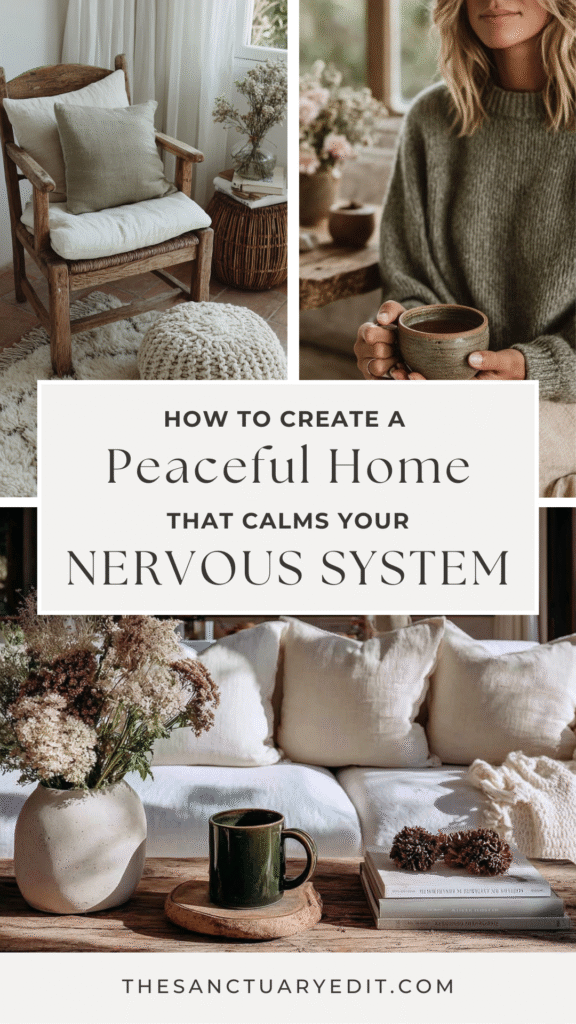
Why Your Home Matters to Your Nervous System
The nervous system is constantly scanning for cues of safety. A cluttered counter, harsh lighting, or loud noise can send subtle signals of stress.
Over time, this keeps us in a heightened state of alertness.
When a space offers warmth, order, and softness, the body receives the opposite signal: it’s safe to relax.
This is why a calm room feels so different from a busy one. It’s not only what we see, it’s what our bodies subconsciously register at a physiological level.
Creating a peaceful home isn’t about grand overhauls. It’s about editing the sensory input around you so your environment supports regulation instead of overstimulation.
Light and Color Set the Tone
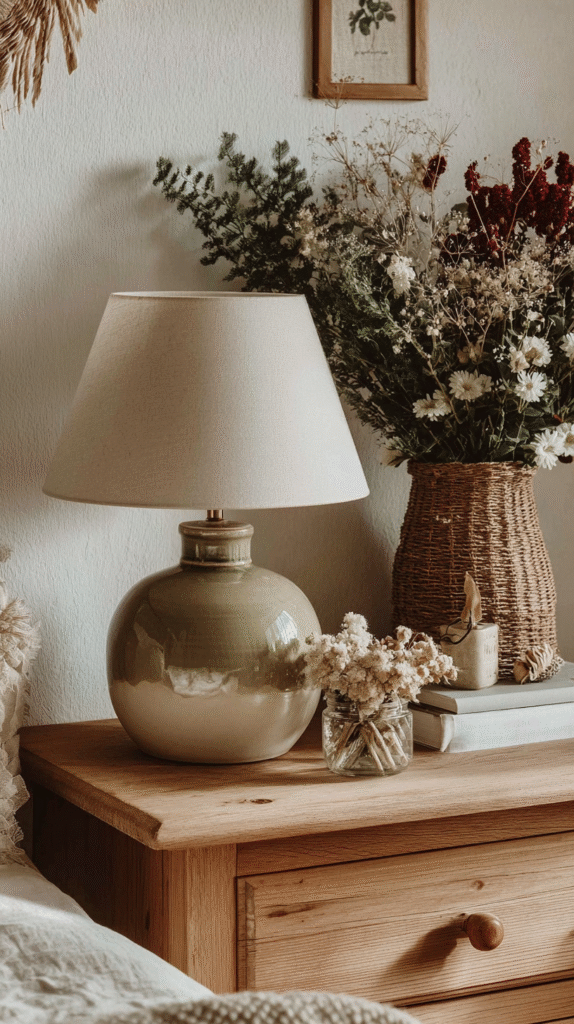
Light is one of the strongest signals to your nervous system. Bright, overhead bulbs keep the body in alert mode.
Soft, layered lighting invites the evening in.
- Choose lamps with warm bulbs instead of cool white
- Add dimmers where possible, or use candles in the evening to mimic natural sunset cues
- Position lighting low and indirect to soften the room
Color also matters. Muted tones like sage, sand, pale blue, clay, naturally quiet the mind.
A bedroom in layered neutrals with a hint of green feels more restful than one with stark white walls. When choosing colors, think of the tones you see in nature. Find more calming bedroom color inspiration here.
Declutter for Visual Calm
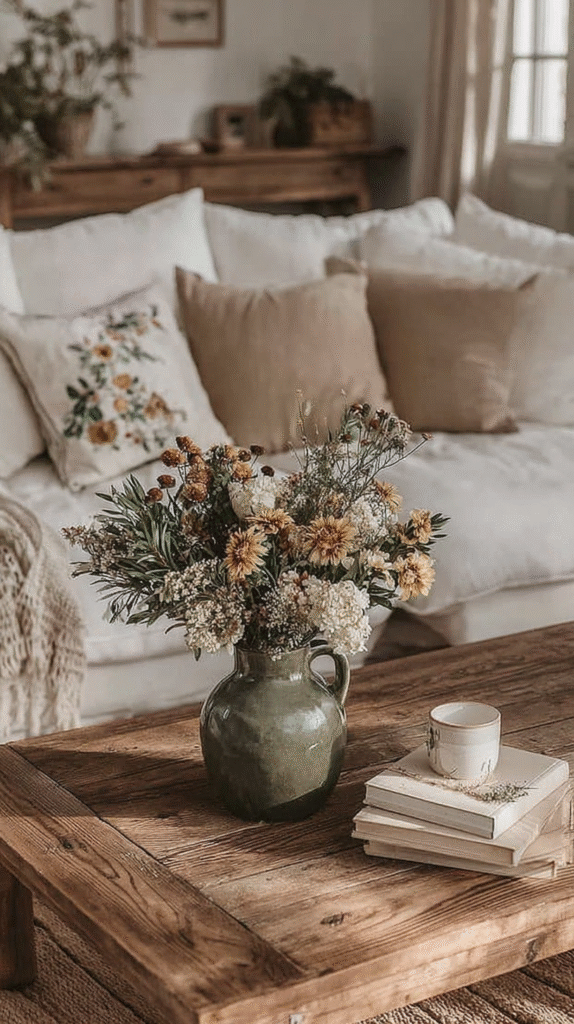
Visual clutter is one of the most common triggers for overstimulation. Every item in sight demands attention. The nervous system reads it as noise.
Decluttering doesn’t have to mean stripping your home bare. It’s about creating breathing room.
- Clear just one surface at a time: a coffee table, a nightstand, the entry shelf
- Use baskets and trays to corral loose items so they feel contained
- Limit visible décor to a few meaningful pieces instead of many small ones
Even these small edits reduce the cognitive load of your space. Your eyes find rest, and your body follows.
Find a full tutorial for decluttering your home without overwhelm here.
Bring Nature Indoors
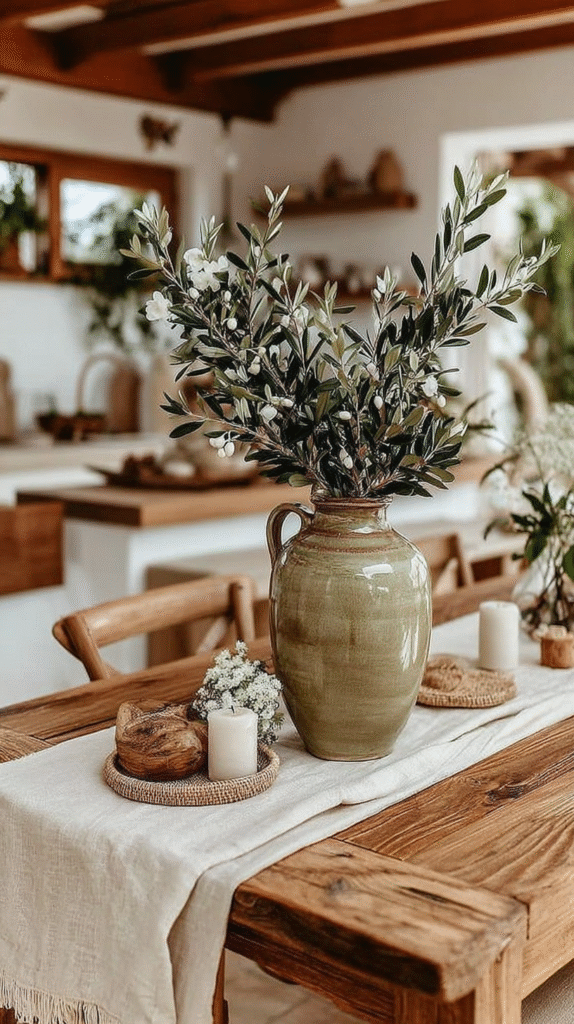
Nature is one of the most reliable regulators of the nervous system. A single plant, a wooden bowl, or the grain of a natural linen curtain grounds the body in a way that synthetic surfaces rarely can.
Try adding:
- A cluster of plants in a corner where light is soft
- A vase with a simple branch or dried grasses
- Natural textures like wool throws, linen bedding, or a rattan basket
These touches don’t just decorate. They connect you back to rhythms larger than yourself.
The nervous system recognizes the organic shapes and textures as safe and grounding.
Find more easy ideas for bringing nature indoors with this post.
Use Scent and Atmosphere
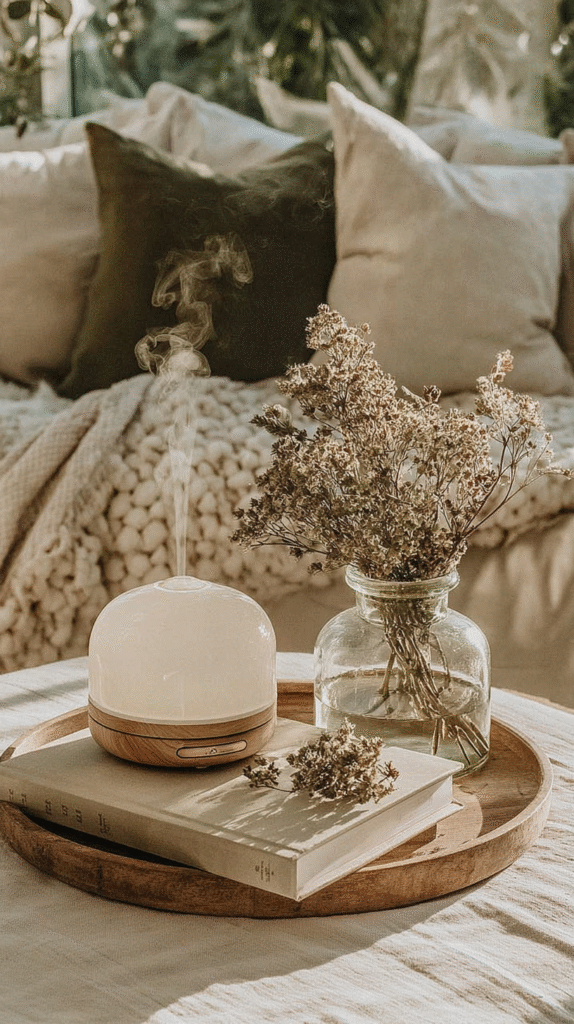
Smell is a direct line to the nervous system. A calming scent can cue relaxation before you even notice it happening.
- Lavender, chamomile, or sandalwood for evenings
- Eucalyptus or citrus in the morning for clarity
- Frankincense during quiet rituals or meditation
Diffusers, beeswax candles, or natural sprays all work. Choose one scent per space so it becomes a signal: here, you can rest.
Layer Texture and Sound
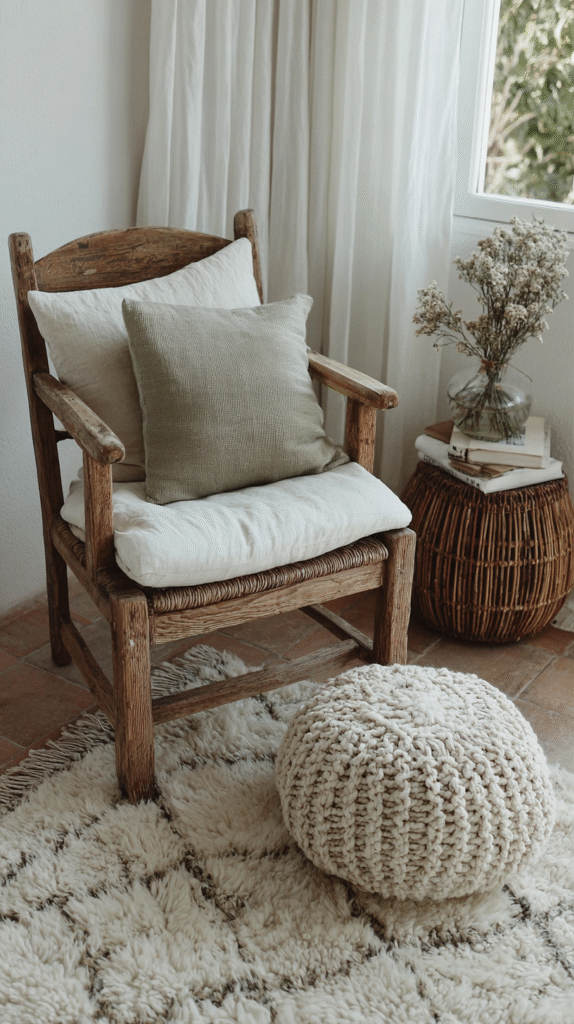
Texture softens a room in ways we often underestimate. A stone floor balanced by a wool rug, or a wooden chair with a linen cushion, changes how the body feels in the space.
Think in layers:
- A rug that quiets footsteps
- Curtains that filter light and dampen sound
- Cushions that invite rest instead of posture
Sound matters, too. Notice the acoustics of your rooms. Adding textiles reduces echo and creates a hushed environment.
You might also introduce calming background sound like gentle music, or the hum of a white noise machine in bedrooms.
Create Rituals That Quiet the Nervous System

Design isn’t only physical, it’s part of a daily rhythm. The way you move through your space teaches your nervous system what to expect.
Try these daily rituals for more calm:
Evening ritual: dim the lights, switch off screens, light a candle, and settle into soft layers. This sequence tells the body: safety, rest, restoration.
Morning ritual: open a window, let natural light in, brew tea or coffee slowly, and keep one surface clear. The ritual itself regulates, not just the objects.
Even one small ritual can become an anchor in your home, a cue to your body that here, you can breathe.
Get started with these easy slow living habits you can do in under 10 minutes.
Room-by-Room Calm Edits
Every room offers different opportunities to support your nervous system.
Living Room
- Clear surfaces and reduce visual noise
- Introduce plants in natural clusters
- Use warm, layered lighting instead of overhead glare
Bedroom
- Muted, earthy color palette for rest
- Linen or organic cotton bedding for softness
- Nightstand reset: one book, one candle, one small vase
Entryway
- Baskets to contain shoes or mail
- A soft lamp instead of harsh overhead light
- One natural focal point like a branch in a vase, or a piece of art
A Weekly Home Reset
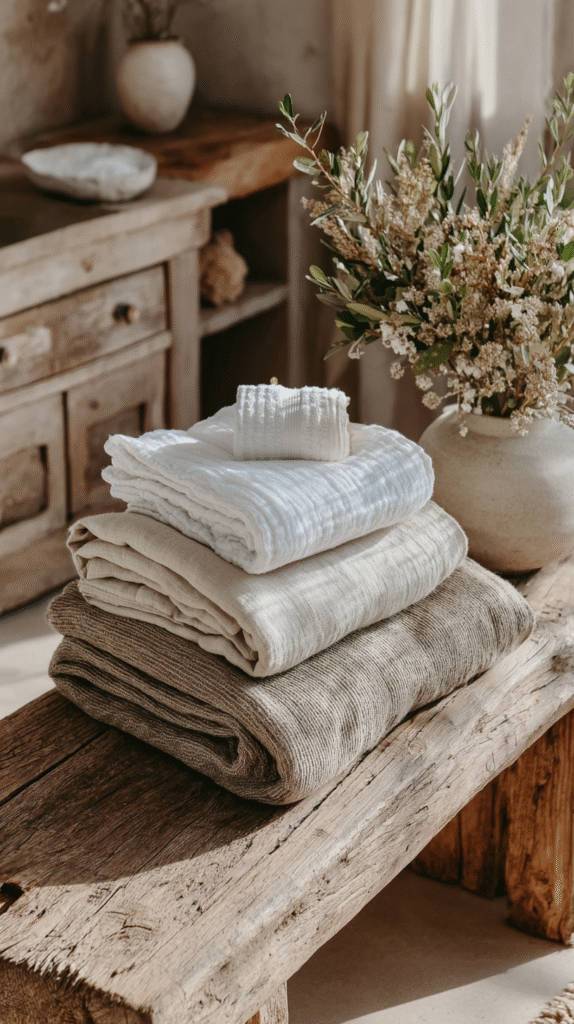
Your nervous system benefits from rhythm. A weekly reset routine can keep spaces feeling light without overwhelming you.
Choose one day, perhaps Sunday evening. Spend 20 minutes clearing surfaces, refreshing linens, and softening the lighting.
Add one natural element, like a sprig of greenery, to signal a new week.
Over time, this becomes more than tidying. It becomes a nervous system ritual: a reset for both you and your home.
Get a step-by-step guide to creating your weekly home reset here.
Closing Reflection
You don’t need to transform your entire home at once. Begin with one edit, a lamp, a cleared surface, a plant on the table. Notice how it shifts the way you feel.
Your home can become a sanctuary without striving for perfection. With each small change, you’re creating an environment that supports nervous system regulation.
A place where your body feels safe and can finally exhale.


